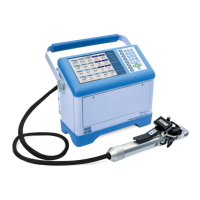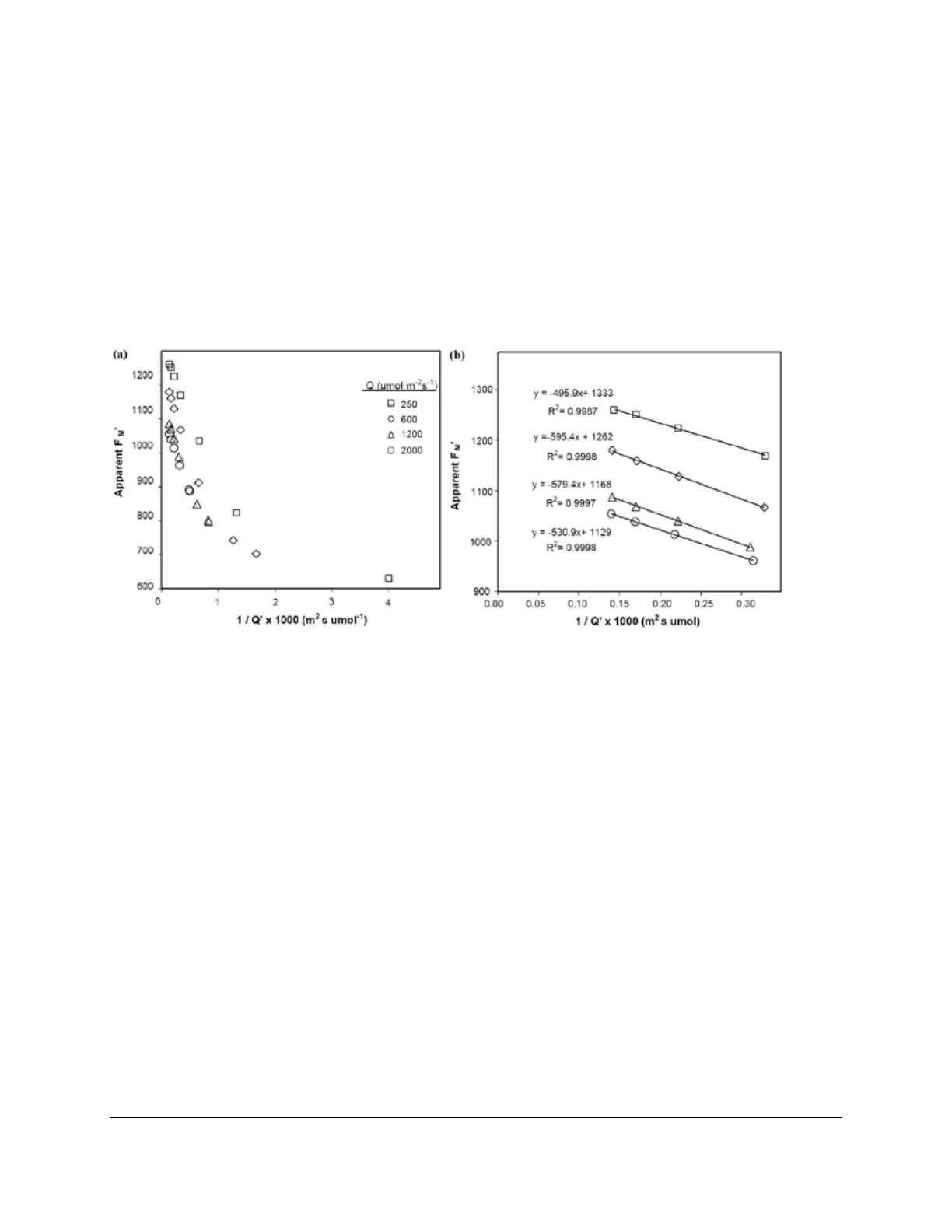CIRAS-3 Operation Manual V. 1.09 137 support@ppsystems.com
Measurement of Fm’ with CIRAS-3
Measurement Principle
Under high actinic light conditions, Fm’ measured using a single saturation pulse may be underestimated
due to the rapid turnover rate of PSII reaction centers. The Multi-Pulse sequence with CIRAS-3 (Console
software V. 1.08 and above), based on a method developed by Earl et al. (2004), allows for a more
accurate estimate of Fm’ by using a train of varying low-intensity saturating pulses. The principle of the
Multi-Pulse flash can be illustrated with the graph below.
Fm’ is measured at a number of saturating light intensities (Q’). In the above figure, Fm’ is plotted against
1/Q’. At light intensities > 1000 μmol m
-2
s
-1
, Fm’ can be seen as linearly correlated to 1/Q’. It has been
suggested that this relationship allows us to extrapolate back to the y-axis and use the y-intercept as an
approximate of Fm’ at infinite light intensity. This figure is adapted from Earl et. al (2004).
Fm’ measured using the Multi-Pulse sequence leads to an improvement in measured Fm’, especially
when the plant is under higher light intensities where it is difficult to completely saturate primary
photochemistry.
The CIRAS-3 implementation of Multi-Pulse allows for 3 to 5 user-defined saturating pulses of varying
intensities (Q’) to be executed in sequence during one measurement cycle of apparent Fm’. The CIRAS-3
computes the linear regression of Fm’ vs. 1/Q’, then extrapolates and displays Fm’ at 1/Q’ = 0.

